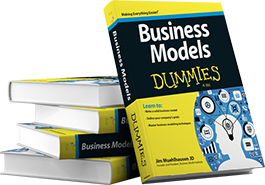J.C. Penney launches an Innovative Business Model
by Oksana Girs
After a dismal revenue increase of 0.7 percent in an 11 month period, J.C. Penney decided to start fresh with new leadership and innovative “pricing strategy.” Under this new strategy, Penny’s will eliminate all sales in favor of everyday low pricing.
In 2011, J.C. Penney Company, Inc. hired a new team of successful professionals helmed by CEO Ron Johnson, former Apple executive, and President Michael Francis, former Target CMO. This team believes that their new pricing strategy can change customers’ way of shopping, purchasing habits and satisfaction level.
So what’s this all about?
- Why wait for sales? Shop when you want. Penney is reducing all of its merchandising by at least of 40 percent. In contrast, in 2011 J.C. Penney hosted 590 sales events.
- Tired of confusing tags? Penney will offer an easy tagging system for you. They will divide all the merchandise into just three pricing categories: “Every Day,” “Month-Long Value,” and “Best Prices,” each having its own color for shoppers’ convenience. The last one will take place every first and third Fridays monthly, and it’s designed to make room for new merchandise.
- Still fooled by psychological pricing? Penney doesn’t think so. They will round their prices: instead of having $14.99 tag, the price will be a round number like $14 or $15.
- Bored with same old advertisement? J.C. Penney launched a new promotional campaign, featuring a new logo and a spokeswoman, talk show host, Ellen DeGeneres.
Is this actually going to work?
- It seems to be an interesting Business Model for J.C. Penney. Have they discovered the customers’ actual needs? Many people want to pay a fair price when they want to, instead of searching and waiting for sales. Customers are tired of cutting coupons from newspapers and carrying a bunch of discounts with them in case they stop by a store. A strategy which makes shopping experiences easier for customers might help Penney build stronger relationship with shoppers; therefore, it will expand the size of their purchasing target market.
- In the era of smart phones, applications that gives shoppers an opportunity to scan an item in order to find the best deal on it, will certainly promote J.C. Penney with its new “Everyday low pricing” concept. At the same time, would this new strategy be able to provide customers with such an important to them “I got a bargain!” feeling, which makes shopping a fun and exciting experience, and stimulates purchases?
- As a part of Penney’s promotional campaign, they would launch a monthly 96-page catalogue that will be mailed to its 14 million customers. Why would J.C. Penney decide on such an expensive advertising move in this digital era, especially, when e-tailing has become such a vital element of the company? Surely they must have some good reasons for this.
- There are definitely noticeable similarities between Penney’s new pricing strategy and existing business model of Wal-Mart’s. Ideas that distinguish J.C. Penney’s business model from competitors are needed to be emphasized. Would this new transformation strategy be enough to revitalize J.C. Penney and make it a real rival of Macy’s and Kohl’s?
- Business model that is based on customers’ desires and provides a variety of services and entertainment for customers is may be successful. J.C. Penney wants to expand its store layout by launching the store-within-a-store concept by adding brand boutiques, such as Martha Stewart, Liz Claiborne, Nanette Lepore, within department chain. Would this business model concentrate on providing a personalized customer service? Former Apple executive Ron Johnson has an experience in building strong relationship with customers and building their trust. Can this translate to soft goods?
Based on the 3005 comments, as of 30th of January, left on the Yahoo! Finance article “J.C. Penney gets rid of hundreds of sales,” readers are looking forward to Penney’s new pricing strategy. Rapid increase in the JCP’s shares on the stock market indicates that stockholders believe in sales growth and are optimistic about company’s strategic change.
By the same token, the new business model could be a train wreck. Sales create motivation to make a special trip to a store. With mall traffic down, will shoppers still be motivated to head to JC Penney’s for the same pricing that was available yesterday and the day before? There is a scenario where this business model blows up badly and 1) lowers Penney’s overall margins, 2) lowers annual sales as reasons for a special trip to Penny’s disappear, 3) lowers impulse buys of high margins items from sale shoppers, and 4) makes Penney’s a Kohl’s Version 2.
What do you think about J.C. Penney’s new Business Model? Can it change customers’ purchasing patterns? Will it revolutionize the retailing industry?










